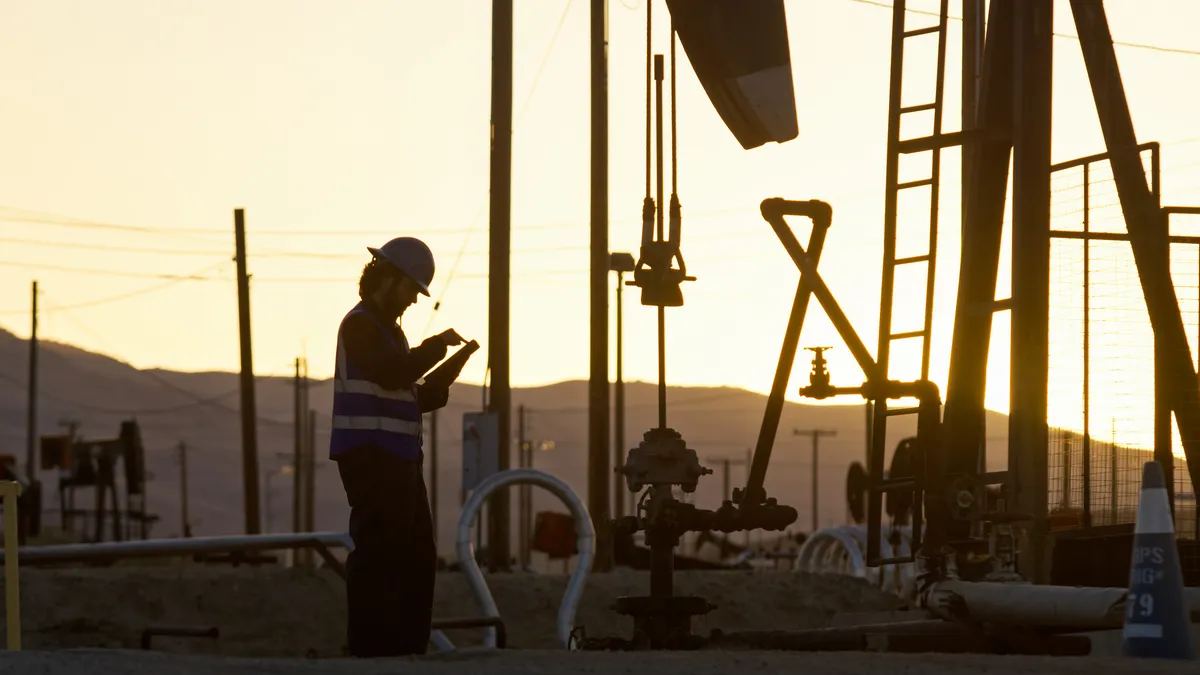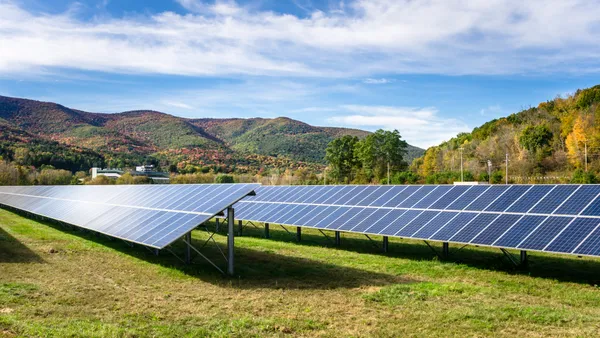Dive Brief:
- Officials in Kern County, California, approved plans for the state’s first major carbon capture and storage plant at a special meeting held Oct. 21.
- The Kern County Board of Supervisors’ unanimous approval of a permit for the facility marks a key milestone for oil and gas company California Resources Corp., which plans to annually inject more than 1 million metric tons of carbon dioxide captured from industrial sources into underground reservoirs at the firm’s Elk Hills Oil and Gas Field.
- The decision follows months of heated debate, with some local leaders touting the project as cutting-edge technology that will boost local jobs and reduce planet-warming pollution and some locals expressing concern about the health and safety impacts, reports the Los Angeles Times.
Dive Insight:
California’s goal is to be carbon neutral by 2045, and the state plans to rely in part on carbon capture and storage to get there. Carbon capture and storage refers to technology that captures carbon dioxide from emission sources, like power plants or industrial facilities, and permanently stores it underground.
Investment in such technology in the U.S. is taking off, with the number of in-development carbon capture and storage facilities dwarfing the number of existing facilities. According to a December 2023 report by the Congressional Budget Office, 15 of these facilities existed across the nation in September 2023 and 121 more were under construction or in development. If they are completed, all of the facilities combined will be able to capture 3% of the nation’s current annual carbon dioxide emissions.
In Kern County, which contains the city of Bakersfield in California’s Central Valley, some community members and environmentalists are worried about what such a facility would mean for residents, particularly if the stored carbon dioxide were to leak out. They point to a 2020 incident in Mississippi in which a carbon dioxide pipeline ruptured, leaving those exposed unconscious, shaking and struggling to breathe.
But county officials expressed confidence that the risks of carbon dioxide exposure can be mitigated. “Staff has been fully aware of this danger from the beginning of the processing of this application, and we have shaped all the conditions, mitigation measures and recommendations presented to you today with the filter of the danger of CO2,” Kern County Planning and Natural Resources Department Director Lorelei Oviatt said at the Oct. 21 meeting.
Critics of carbon capture and storage also say it enables the continued burning of fossil fuels and distracts from investments in renewable energy.
However, California Resources Corp. is optimistic about the facility’s potential impact on the historic oil community of Kern County. “We believe that carbon capture technology will lead to the creation of new energy jobs and improve air quality in Kern County,” California Resources Corp. CEO and President Francisco Leon said in an Oct. 21 statement.
The U.S. Environmental Protection Agency still needs to officially greenlight the project but has already approved draft permits for some of the development, according to local news organization CalMatters.













